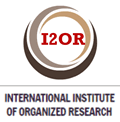Patrones fenotípicos de susceptibilidad de Staphylococcus aureus de piel y partes blandas en hospitalizados
Palabras clave:
patrones fenotípicos, Staphylococcus aureusResumen
Introducción: los patrones fenotípicos de susceptibilidad de Staphylococcus aureus constituyen la mejor expresión de su estudio fenotípico actualmente. Objetivo: identificar patrones fenotípicos de susceptibilidad ante cepas meticilina resistente y sensible. Método: se realizó una investigación transversal, descriptiva en el Hospital “Arnaldo Milián Castro” de 2013 a 2017 de Staphylococcus aureus aislados en piel y partes blandas en pacientes hospitalizados que presentaron el antibiograma completo consistente en: meticilina, ciprofloxacina, cloranfenicol, gentamicina y cotrimoxazol, clasificados en resistentes o sensibles; se crearon 16 patrones con los cuatro últimos antimicrobianos en ese orden preestablecido. La población fue de 1 789 aislamientos. Se obtuvo una frecuencia de distribución de cada patrón y se realizó el análisis estadísticos como Chi cuadrado de independencia y V de Cramer. Resultados: circularon los 16 patrones fenotípicos de susceptibilidad, el 13, el 1 y el 15 fueron los de mayores aislamientos en el quinquenio estudiado. Existió dependencia entre la susceptibilidad de la meticilina y los patrones 13 (RSSS), 1 (SSSS), 15 (RSRR), 16 (RSRS), 2(SSSR), 9(RRRR) y 3 (SSRR); esta asociación fue moderada con los patrones 13 y 1, mientras que fue baja con los cinco restantes. Siempre que se estuvo en presencia de meticilina sensible se encontraron, con mayor frecuencia, los patrones 1, 2 y 3 y si la meticilina era resistente los patrones de mayor frecuencia fueron 13, 15, 16 y 9. Conclusiones: hubo pleomorfismo de cepas de Staphylococcus aureus en infecciones de piel y partes blandas con predominio de asociación estadística a meticilina resistente.
Descargas
Citas
1. López Leyte M, Calzadilla Moreira V, Hernández Núñez A, Tase Martínez MJ, Broche Villareal L. Infecciones piogénas de tejidos y partes blandas. Boletín Información Terapéutica para la APS [Internet]. 2012 Dic [citado 20 Sep 2018];(27). Disponible en: http://files.sld.cu/cdfc/files/2013/06/boletin27partesblandasdic2012.pdf
2. Arbolaez Goicochea MC. Caracterización del Staphylococcus aureus aislado en piel y tejidos blandos, Hospital Universitario “Arnaldo Milián Castro”, 2003-2008 [tesis]. Santa Clara: Universidad de Ciencias Médicas de Villa Clara; 2011.
3. Brooks GF, Carroll KC, Butel JS, Morse SA, Mietzner TA. Microbiología médica. 25a ed. México: McGraw-Hill; 2011. p.185-192.
4. Sánchez M, Hernández O, Velásquez LA, Rivas D, Marín A, González LA, et al. Caracterización del gen mecA de Staphylococcus aureus resistentes a meticilina aislados de tres grupos poblacionales de la ciudad de Medellín. Infect [Internet]. 2013 Jan-Jun [citado 13 Dic 2018];17(2):66-72. Disponible en: http://www.scielo.org.co/scielo.php?script=sci_arttext&pid=S0123-93922013000200004&lng=en&nrm=iso&tlng=es
5. Abd El-Hamid MI. Staphylococcal Cassette Chromosome mec (SCCmec) in Methicillin-Resistant Staphylococcus aureus: An Overview. Adv Tech Clin Microbiol [Internet]. 2016 [citado 13 Dic 2018];1(1):1. Disponible en: http://www.imedpub.com/articles/staphylococcal-cassette-chromosome-mec-sccmec-in-methicillinresistant-staphylococcus-aureus-an-overview.php?aid=17467
6. Sccmec.org [Internet]. Chicago: Antimicrobial Agents and Chemotherapy; 2018 [actualizado 1 Ene 2018; citado 13 Dic 2018]. Disponible en: http://www.sccmec.org/Pages/SCC_HomeEN.html
7. Aguayo Reyes A, Quezada Aguiluz M, Mella S, Riedel G, Opazo Capurro A, Bello Toledo H, et al. Bases moleculares de la resistencia a meticilina en Staphylococcus aureus. Rev Chil Infectol [Internet]. 2018 [citado 15 Ago 2019];35(1):7-14. Disponible en: https://scielo.conicyt.cl/scielo.php?script=sci_arttext&pid=S0716-10182018000100007
8. CLSI. Performance Standards for Antimicrobial Susceptibility Testing. 28th ed. CLSI supplement M100. Wayne, PA: Clinical and Laboratory Standards Institute; 2018 [citado 4 Sep 2018]. Disponible en: https://clsi.org/media/1930/m100ed28_sample.pdf
9. Munita JM, Arias CA. Mechanisms of Antibiotic Resistance. Microbiol Spectr [Internet]. 2016 Apr [citado 14 Sep 2018]:4(2): Disponible en: https://www.ncbi.nlm.nih.gov/pmc/articles/PMC4888801/. https://dx.doi.org/10.1128/microbiolspec.VMBF-0016-2015
10. Toraño Peraza G. Mecanismos emergentes de resistencia en bacterias gram positivas. Conference ESCMID Antimicrobial Resistance from bench to practice. Habana: Instituto Pedro Kourí; 2018.
11. Armas Fernández A, Suárez Trueba B, Crespo Toledo N, Suárez Casal A. Resistencia de Staphylococcus aureus a la meticilina en aislamientos nosocomiales en un hospital provincial. Gac Méd Espirit [Internet]. 2015 Dic [citado 19 Mar 2018];17(3):80-91. Disponible en: http://scieloprueba.sld.cu/scielo.php?script=sci_arttext&pid=S1608-89212015000300011&lng=es
12. Mederos Hernández J, Morejón García M. Frecuencia de aislamiento de Staphylococcus aureus resistente a meticillina en el Hospital “Manuel Fajardo Rivero”. Rev Haban Cienc Méd [Internet]. 2014 May-Jun [citado 10 Ago 2018];13(3):406-416. Disponible en: http://scielo.sld.cu/scielo.php?script=sci_arttext&pid=S1729-519X2014000300006
13. Horna G, Astocondor L, Jacobs J, García C. Evaluación de métodos fenotípicos para la detección de Staphylococcus aureus resistente a meticilina. Rev Esp Quimioter [Internet]. 2015 [citado 10 Ago 2018];28(2):98-100. Disponible en: https://seq.es/seq/0214-3429/28/2/horna.pdf
14. Borras Ordáz C. Epidemiología de la resistencia a meticilina en cepas de Staphylococcus aureus aisladas en hospitales españoles [tesis doctoral]. Barcelona: Universidad de Barcelona; 2006 [citado 10 Ago 2018]. Disponible en: https://www.tesisenred.net/bitstream/handle/10803/2513/CBO_TESIS_DOCTORAL.pdf?sequence=1&isAllowed=y
15. Chávez Vivas M, del Cristo Martínez AC, Esparza Mantilla M. Caracterización de Staphylococcus aureus obtenido del ambiente hospitalario y del personal de salud en un hospital de la ciudad de Cali. Biosalud [Internet]. 2017 Jul-Dic [citado 10 Ago 2018];16(2):22-33. Disponible en: http://www.scielo.org.co/pdf/biosa/v16n2/1657-9550-biosa-16-02-00022.pdf
16. Orlin I, Rokney A, Onn A, Glikman D, Peretz A. Hospital clones of methicillin-resistant Staphylococcus aureus are carried by medical students even before healthcare exposure. Antimicrob Resist Infect Control [Internet]. 2017 [citado 10 Ago 2018];6:15. Disponible en: https://www.ncbi.nlm.nih.gov/pmc/articles/PMC5260124/. https://doi.org/10.1186/s13756-017-0175-2
17. Cáceres M. Frecuencia de portadores nasales de Staphylococcus aureus resistente a meticilina en personal de salud de hospitales de Nicaragua. Rev Panam Salud Publica [Internet]. 2011 [citado 10 Ago 2018];30(6):610-4. Disponible en: http://iris.paho.org/xmlui/bitstream/handle/123456789/9411/a19v30n6.pdf?sequence=1
Descargas
Publicado
Cómo citar
Número
Sección
Licencia
Aquellos autores/as que tengan publicaciones con esta revista, aceptan los términos siguientes:
- Los autores/as conservarán sus derechos de autor y ceden a la revista el derecho de primera publicación de su obra, el cuál estará simultáneamente sujeto a una licencia Creative Commons Atribución/Reconocimiento-NoComercial 4.0 Internacional — CC BY-NC 4.0 que permite a terceros compartir la obra siempre que se indique su autor y su primera publicación esta revista.
- Los autores/as podrán adoptar otros acuerdos de licencia no exclusiva de distribución de la versión de la obra publicada (p. ej.: depositarla en un repositorio institucional o publicarla en un volumen monográfico) siempre que se indique la publicación inicial en esta revista.
- Se permite y recomienda a los autores/as difundir su obra a través de Internet (p. ej.: en archivos telemáticos institucionales o en su página web) antes y durante el proceso de envío, lo cual puede producir intercambios interesantes y aumentar las citas de la obra publicada. (Véase El efecto del acceso abierto).





 15 diciembre del 2025
15 diciembre del 2025


